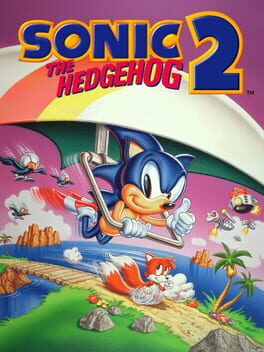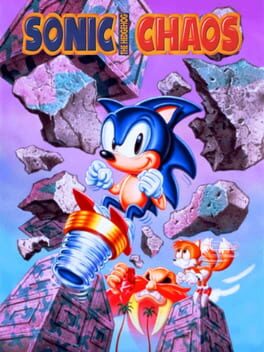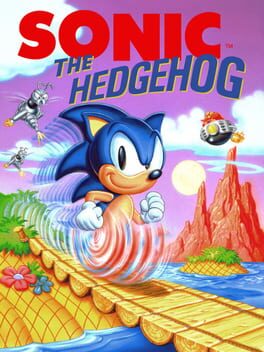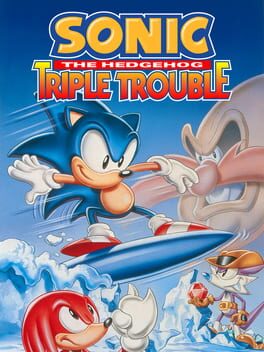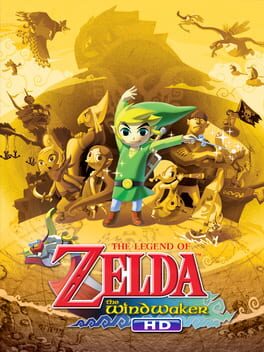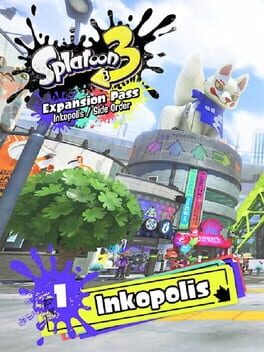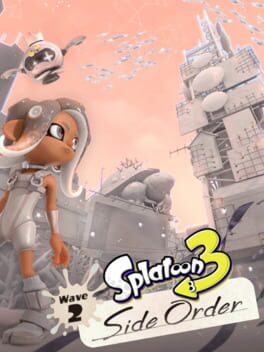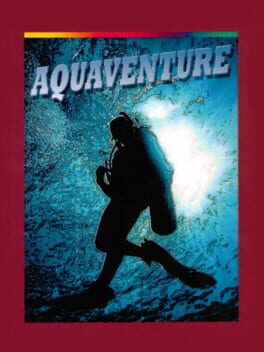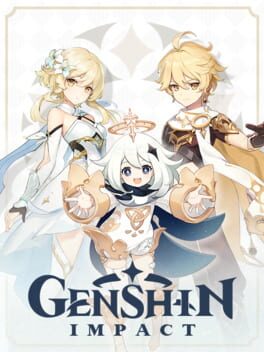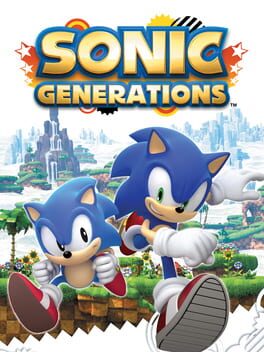SolMerse
BACKER
2024
I never really understood these games where the horror is mostly present when you're NOT doing well. If you pay attention and are good at the game (I feel like I was, I mostly had perfect scores until the very end!) most of the horror is stuff you'll have to look up on YouTube. It seems common in this scene of games, what's up with that?
I'm fond of this game, though! The horror that is there is entertaining enough, there are some interesting ideas here. When you beat the game you get to see some developer artwork and commentary, and it's clear that this wasn't just some quick job to capitalize on what YouTubers would make a viral video on. It's funny, too. I also am realizing I'm a sucker for games that have interfaces that resemble older operating systems!
I'm fond of this game, though! The horror that is there is entertaining enough, there are some interesting ideas here. When you beat the game you get to see some developer artwork and commentary, and it's clear that this wasn't just some quick job to capitalize on what YouTubers would make a viral video on. It's funny, too. I also am realizing I'm a sucker for games that have interfaces that resemble older operating systems!
2023
"Limitation breeds innovation". It's the oldest cliche in the book when talking about video-games of the Retro Variety. It's true, and I believe it. If all the solutions, the late-night, sweat-filled hack-job work-arounds that make the impossible possible are good enough, it's those limitations that can be part of the artistry too. Not just the dream.
What happens when those limitations are taken away? Should they be? Is it messing not just with art, but history to do so? These are important questions, students of art have to grapple with them especially in mediums only as new as the Dwight D. Eisenhower Administration.
The story of the Sonic games on Game Gear and Master System (at least, until Triple Trouble) is not just one of that limitation, but it is also one of avoiding imitation. Imitation was only another limitation in a world where they sure as hell didn't need another. Instead, another path was forged, forgoing even the chalk and numbers that was the last vestige tying the knot of the SEGA ecosystem. Sonic the Hedgehog: Triple Trouble was and always will be a Game Gear game. It couldn't have been a Genesis game.
Noah Copeland dares dream of a world where it was anyway. It's been said that the best way to predict the future is to create it. Mr. Copeland predicts a past by also creating it, but with the respect and finesse to not forget Triple Trouble's roots. It doesn't come out of nowhere, it is rooted in something. Yes, it is clearly a Sonic game that is taking after Sonic 3 & Knuckles, turning Triple Trouble into a sequel of that. But if you're going to imagine a past, you better make it believable. Mr. Copeland and his team understood this, it wasn't enough to just be the Sonic game that all Sonic fans would want to play. It convinced me. For the first time that I had played a Sonic fan-game, and I have played many, I had felt that this really could have existed. Sonic 3 & Knuckles, one of the best games ever made, maybe could have been followed up this way. Had it existed, it maybe would have been considered one of the best Sonic games. Had it existed, maybe I would think it's the best Sonic game ever made. Noah Copeland and his team turned the dream into reality; it is my favorite Sonic game ever made.
This is not just a prettier version of that old Game Gear game. Perhaps that would have been enough or preferable for many, but to me that would not have been faithful to the spirit of Triple Trouble, the blazing spirit to make the impossible possible. It's that same spirit more than anything else that Triple Trouble 16-bit handles with grace.
In 1994, a dream came true. In 2022, a dream came true.
What happens when those limitations are taken away? Should they be? Is it messing not just with art, but history to do so? These are important questions, students of art have to grapple with them especially in mediums only as new as the Dwight D. Eisenhower Administration.
The story of the Sonic games on Game Gear and Master System (at least, until Triple Trouble) is not just one of that limitation, but it is also one of avoiding imitation. Imitation was only another limitation in a world where they sure as hell didn't need another. Instead, another path was forged, forgoing even the chalk and numbers that was the last vestige tying the knot of the SEGA ecosystem. Sonic the Hedgehog: Triple Trouble was and always will be a Game Gear game. It couldn't have been a Genesis game.
Noah Copeland dares dream of a world where it was anyway. It's been said that the best way to predict the future is to create it. Mr. Copeland predicts a past by also creating it, but with the respect and finesse to not forget Triple Trouble's roots. It doesn't come out of nowhere, it is rooted in something. Yes, it is clearly a Sonic game that is taking after Sonic 3 & Knuckles, turning Triple Trouble into a sequel of that. But if you're going to imagine a past, you better make it believable. Mr. Copeland and his team understood this, it wasn't enough to just be the Sonic game that all Sonic fans would want to play. It convinced me. For the first time that I had played a Sonic fan-game, and I have played many, I had felt that this really could have existed. Sonic 3 & Knuckles, one of the best games ever made, maybe could have been followed up this way. Had it existed, it maybe would have been considered one of the best Sonic games. Had it existed, maybe I would think it's the best Sonic game ever made. Noah Copeland and his team turned the dream into reality; it is my favorite Sonic game ever made.
This is not just a prettier version of that old Game Gear game. Perhaps that would have been enough or preferable for many, but to me that would not have been faithful to the spirit of Triple Trouble, the blazing spirit to make the impossible possible. It's that same spirit more than anything else that Triple Trouble 16-bit handles with grace.
In 1994, a dream came true. In 2022, a dream came true.
1992
Continuing to forge its own path. Interestingly you even see this manifest with characters not serving the same role that they do in their home-console counterparts. Tails strangely goes from Sonic's sidekick to Sonic's very first damsel-in-distress. It's with this game that there is this established line that these handheld Sonic games are not conversions of their older brothers, but their own artistic statements. Is the number even needed anymore?
Maybe the number going away was all it ever needed. Something clicked with this game, and it was the beckoning glimpse of what Sonic could really be in the handheld space. Sonic now finally truly has its own Super Mario Land. Like Super Mario Land though, this is by no means attempting to compete with its contemporaries over at the home-console arena. This is a miniature Sonic game still, and the game won't let you forget that. Even the penultimate level is shorter than the shortest levels in the home-console games. Was this really the limit of what was possible?
1991
As we move toward a world where our console games get ported even to our smartphones, the art of capturing the essence of a home-console game on a handheld is becoming a lost art. Sonic the Hedgehog has some history with this topic, but it all begins with a game that takes the wheels of familiarity off, setting the stage for how future handheld Sonic games approach connections with their older siblings.
No, this was the limit. It had been three years since the first attempt to bring this blue maniac to the Game Gear. From the beginning it was clear that to imitate the older brothers wasn't just technically unfeasible, but also foolish. Imitation is a losing battle. Self-innovation is another story.
Triple Trouble compartmentalized all that had been learned and fought for in the last three years, and blows them all up to the extreme that the Game Gear could handle. You can tell. The performance of the game is a sign of that, but the reward is tasty. Levels were no longer 40-50 seconds, but now 4-5 minutes. Levels were now beginning to square up to the ambition and scope that had bejeweled the home-console Sonic releases. But this game wasn't just Sonic 3, it was its own work of art. It had even innovated on the Sonic formula in ways that the home console games weren't doing. The Special Stages in Triple Trouble are the most impressive the series had seen up to that point.
They finally had cracked the code. It is still a Game Gear game, but it is the Game Gear game that Sonic fans and SEGA were waiting three great years for. It's these three years that set the stage for most future handheld Sonic releases. In 1994, a dream came true.
Triple Trouble compartmentalized all that had been learned and fought for in the last three years, and blows them all up to the extreme that the Game Gear could handle. You can tell. The performance of the game is a sign of that, but the reward is tasty. Levels were no longer 40-50 seconds, but now 4-5 minutes. Levels were now beginning to square up to the ambition and scope that had bejeweled the home-console Sonic releases. But this game wasn't just Sonic 3, it was its own work of art. It had even innovated on the Sonic formula in ways that the home console games weren't doing. The Special Stages in Triple Trouble are the most impressive the series had seen up to that point.
They finally had cracked the code. It is still a Game Gear game, but it is the Game Gear game that Sonic fans and SEGA were waiting three great years for. It's these three years that set the stage for most future handheld Sonic releases. In 1994, a dream came true.
In late February, I left a review on this game. I didn't really get it. I wouldn't say I fully get it now either, but I have been thinking a lot about this game ever since then. That review kind of sucked, but I guess it's a snapshot of that moment in time, the immediate guttural reaction to a challenge like this game is. I acknowledged in that review that as a cis guy, this was a perspective that I was likely not going to fully understand. I do feel as though this game is somehow unreviewable. Maybe this review can be seen as more of a review of my now-deleted review. In that I described this work as "ineffectual". That feels strange to say. I think it being on a site like Backloggd where it's presented as the same sort of product that any other video game is, inclines one to view it as a product. It's art, but is it really fair for it to be judged in the same way that Baldur's Gate 3 is? That just feels off-base to me. For me to suggest that it is "ineffectual" is almost like saying that somebody is venting in an "ineffectual" way. You could say that I guess, but read the room man! Maybe that's fair game because it's released as a Twine game on itch.io, but that still doesn't quite sit well with me. I didn't even really know what Twine games were when I first played this! It looks like this is its own category of game, which is pretty cool. I think my unfamiliarity might have hampered my perception in some way. This is an earnest piece of writing. That's important.
The major takeaway that I got from this game upon first playing it is this acknowledgment that there aren't that many critically acclaimed girly/feminine games. That IS true. As a cis guy I think that's an important point that I hadn't really thought about before. I find this point to be even more poignant after seeing the release of Princess Peach Showtime, recently. Especially with how a lot of people seem to look at a game like that. An industry where everybody feels there are ample games made for people like them and by people like them is a better industry than where we are today.
I love mechanics in video games. I love how much there is going on in a game like Metal Gear Solid 2, that kind of nitty-gritty where there's detail pouring out of every button press, every possibility, every corner of whatever world you're in; in my mind that is some of the best of what video games have to offer as art. I think when first reading this, the frank style of writing made me feel as though I was somehow wrong for thinking that way, like I was being reprimanded as this silly guy gamer. But that's really a reactionary way of looking at it, I think. I don't think that's its purpose. In retrospect I think I was really thinking about it all wrong. I think my older review, and I suppose the divided reviews on this game on this site are a showcase in how a site like Backloggd can and does play a part in the way in which we perceive art. I honestly wonder, if I had found out about this game through a recommendation from a friend, or some other kind of website, would I have reacted to it the way that I had? In a place like this, a piece of writing can end up commodified, as just another product to review and rate, and because it has strong writing it must have some sort of finger-wagging point to say to any and all gamers that come across it. Though I often criticize reactionaries and their culture wars against art, this was a case where I found some other ways that somebody can get sucked into that. Even me. That's humbling, and it has profound meaning to how I engage with art going forward. I realize that it's something that was present with how I engaged with other perspectives in the past, too. I never really understood the whole "liminal space" thing that was popular online, and I don't think I engaged with those feelings in an empathetic way. This was meaningful, important reading for me to have had.
This writing is another perspective. The best thing you can hope for with something like this is that it'll make you think, or at least feel. If it's lucky, it may even change some minds, open up mental doors. Evidently, it's successful. Based on Princess' perspective shown here, I'd really like to check out her games.
The major takeaway that I got from this game upon first playing it is this acknowledgment that there aren't that many critically acclaimed girly/feminine games. That IS true. As a cis guy I think that's an important point that I hadn't really thought about before. I find this point to be even more poignant after seeing the release of Princess Peach Showtime, recently. Especially with how a lot of people seem to look at a game like that. An industry where everybody feels there are ample games made for people like them and by people like them is a better industry than where we are today.
I love mechanics in video games. I love how much there is going on in a game like Metal Gear Solid 2, that kind of nitty-gritty where there's detail pouring out of every button press, every possibility, every corner of whatever world you're in; in my mind that is some of the best of what video games have to offer as art. I think when first reading this, the frank style of writing made me feel as though I was somehow wrong for thinking that way, like I was being reprimanded as this silly guy gamer. But that's really a reactionary way of looking at it, I think. I don't think that's its purpose. In retrospect I think I was really thinking about it all wrong. I think my older review, and I suppose the divided reviews on this game on this site are a showcase in how a site like Backloggd can and does play a part in the way in which we perceive art. I honestly wonder, if I had found out about this game through a recommendation from a friend, or some other kind of website, would I have reacted to it the way that I had? In a place like this, a piece of writing can end up commodified, as just another product to review and rate, and because it has strong writing it must have some sort of finger-wagging point to say to any and all gamers that come across it. Though I often criticize reactionaries and their culture wars against art, this was a case where I found some other ways that somebody can get sucked into that. Even me. That's humbling, and it has profound meaning to how I engage with art going forward. I realize that it's something that was present with how I engaged with other perspectives in the past, too. I never really understood the whole "liminal space" thing that was popular online, and I don't think I engaged with those feelings in an empathetic way. This was meaningful, important reading for me to have had.
This writing is another perspective. The best thing you can hope for with something like this is that it'll make you think, or at least feel. If it's lucky, it may even change some minds, open up mental doors. Evidently, it's successful. Based on Princess' perspective shown here, I'd really like to check out her games.
2005
2009
2020
2011



